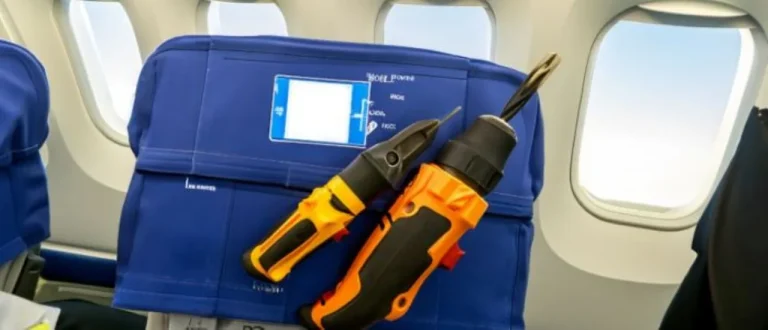Booking a flight involves checking departure and arrival times to coordinate your travel plans. But with airports located across different time zones, are the flight times displayed in local time or standardized time?
Here’s a quick answer: most airlines today display flight times in local time for both the departure and arrival airports.
In this comprehensive guide, we’ll explain how flight times work, including the role of time zones, daylight saving time, and 24-hour clock formats.
You’ll learn how to interpret flight schedules to avoid confusion about the real departure and arrival times.
Flight Time Basics: Time Zones and Local Time
Airports observe the local time zone of their location
When it comes to flight times, it’s important to understand that airports operate according to the local time zone of their location.
This means that the time displayed on your ticket and at the airport will be in accordance with the local time of the departure or arrival city.
For example, if you’re flying from New York to Los Angeles, the flight times will be based on the Eastern Standard Time (EST) for departure and Pacific Standard Time (PST) for arrival.
Did you know? Some airports are located near the border of different time zones. This can sometimes lead to confusion, as the airport may operate on a different time zone than the city it is located in.
It’s always a good idea to double-check the local time of your departure and arrival cities to avoid any misunderstandings.
Departure and arrival times convert to local timezones
When you book a flight, the departure and arrival times provided by the airline are generally displayed in the local time of each respective city.
This means that if you’re booking a flight from London to Sydney, the departure time will be in local London time, while the arrival time will be in local Sydney time.
It’s important to take note of these time conversions to ensure you arrive at the airport on time and plan your schedule accordingly.
Pro tip: If you’re traveling across multiple time zones, it’s a good idea to set your watch to the local time of your destination as soon as you board the plane.
This will help you adjust to the new time zone and avoid any confusion during your journey.
Daylight saving time impacts displayed flight times
Daylight saving time can have an impact on the displayed flight times, especially when it is in effect in the departure or arrival city.
During daylight saving time, the clock is typically set forward by one hour, resulting in longer daylight hours in the evening.
This means that flight times may be adjusted to reflect the local time change.
How 24-Hour Clock Formats Display Flight Times
24-hour clocks avoid AM/PM confusion
When it comes to displaying flight times, the use of 24-hour clock formats is preferred. This format eliminates any confusion that may arise from the traditional AM/PM system.
With a 24-hour clock, there is no need to decipher whether a flight is scheduled for 2:00 AM or 2:00 PM.
Instead, the time is clearly indicated as 02:00 or 14:00, respectively. This ensures that travelers and airline staff are on the same page when it comes to departure and arrival times.
Times after 12:00 are shown from 13:00 to 23:00
One key aspect of the 24-hour clock format is how it represents times after 12:00.
In this system, these times are shown starting from 13:00 and continue until 23:00. For example, if a flight is scheduled for 7:00 PM, it would be displayed as 19:00.
This consistent numbering system makes it easy to understand the time without any confusion or ambiguity. Whether you’re a frequent traveler or an airline employee, this standardized format ensures everyone is on the same page.
Leading zeros used for clarity: e.g. 08:00, 22:30
Another important feature of the 24-hour clock format is the use of leading zeros for clarity. This means that times before 10:00 are displayed with a leading zero, such as 08:00 or 09:30.
This practice ensures that there is no confusion between single-digit and double-digit numbers.
It also helps to maintain consistency in the display of flight times. Whether you’re checking your itinerary or looking at the flight board, the leading zeros make it easy to quickly interpret the scheduled departure or arrival time.

Tips for Confirming Scheduled Departure and Arrival Times
When planning a trip, it is essential to have accurate information about the departure and arrival times of your flights. Here are some important tips to help you confirm these times:
Check if airports observe daylight saving time
One factor that can affect flight times is daylight saving time. Some airports may adjust their schedules during daylight saving time, while others may not. It is crucial to check if the airports you will be flying to or from observe daylight saving time.
This information can be easily found on the official website of the airport or through reliable travel websites.
Pro Tip: Remember to adjust your own watch and devices accordingly if you are traveling to or from a destination that observes daylight saving time.
Factor in multi-leg flight connections and layovers
If you have a multi-leg journey or layovers, it is essential to factor in the additional time needed for these connections. Flight delays or changes in the departure time of one leg can impact the overall schedule of your journey.
It is advisable to allow some extra time between your flights to account for any potential delays and ensure a smooth travel experience.
Did you know? According to a study conducted by FlightStats, approximately 23% of flights experience delays each year. Planning for potential delays can save you from unnecessary stress and allow for a more enjoyable trip.
Allow extra time for airport processing requirements
When estimating your departure and arrival times, it is crucial to consider the airport processing requirements. These requirements may include security checks, immigration procedures, and baggage claim.
Each airport has its own set of rules and regulations, so it is essential to familiarize yourself with the specific requirements of the airports you will be traveling through.
Pro Tip: To save time, make sure you have all the necessary travel documents readily available and comply with any security regulations to ensure a smooth and hassle-free journey.
Using Time Zone Maps and Airport Codes
Look up airport time zones before booking
When planning a trip, it is essential to consider the time zones of the airports you will be departing from and arriving at.
This information will help you determine the correct local time for your flights. Before booking your tickets, take a moment to look up the time zones of the airports involved.
One way to do this is by using time zone maps, which provide a visual representation of the different time zones around the world.
By identifying the time zones of your departure and arrival airports, you can ensure that you have accurate flight times in local time.
Utilize airline and airport resources
Another helpful resource for determining flight times in local time is to utilize the information provided by airlines and airports.
Most airlines and airports have websites or mobile apps that offer detailed flight information, including departure and arrival times in the local time zone.
These resources are usually reliable and up-to-date, making them a convenient and trustworthy option for obtaining accurate flight times.
Additionally, some airlines provide the option to display flight times in different time zones, allowing you to easily convert them to your desired local time.
It’s also worth noting that some airports have multiple terminals or concourses that may operate in different time zones.
In such cases, it’s important to double-check the specific terminal or concourse you will be departing from or arriving at, as the time zone may differ from the main airport.
Double check times when making reservations
When making flight reservations, it’s crucial to double-check the flight times in local time.
While online booking platforms typically display flight times in your local time zone by default, it’s always a good idea to verify this information before finalizing your reservation.
This can help you avoid any confusion or potential scheduling conflicts.
Additionally, if you are booking through a travel agency or speaking with a customer service representative, don’t hesitate to ask for confirmation of the flight times in local time.
It’s better to be safe than sorry when it comes to ensuring that you arrive at the airport on time.
Remember, understanding and confirming flight times in local time is an important aspect of planning any trip. By looking up airport time zones before booking, utilizing airline and airport resources, and double-checking times when making reservations, you can ensure a smooth and hassle-free travel experience.
So, the next time you’re planning a trip, don’t forget to consider the time zones and airport codes to avoid any confusion and make the most of your journey!
Conclusion
We hope this guide has clarified that flight departure and arrival times are displayed in the local time zones of the corresponding airports.
While 24-hour clocks aim to avoid AM/PM confusion, you should still confirm scheduled flight times using time zone maps and airport codes.
Safe travels on your next trip, and may your flight times match your local watch!






